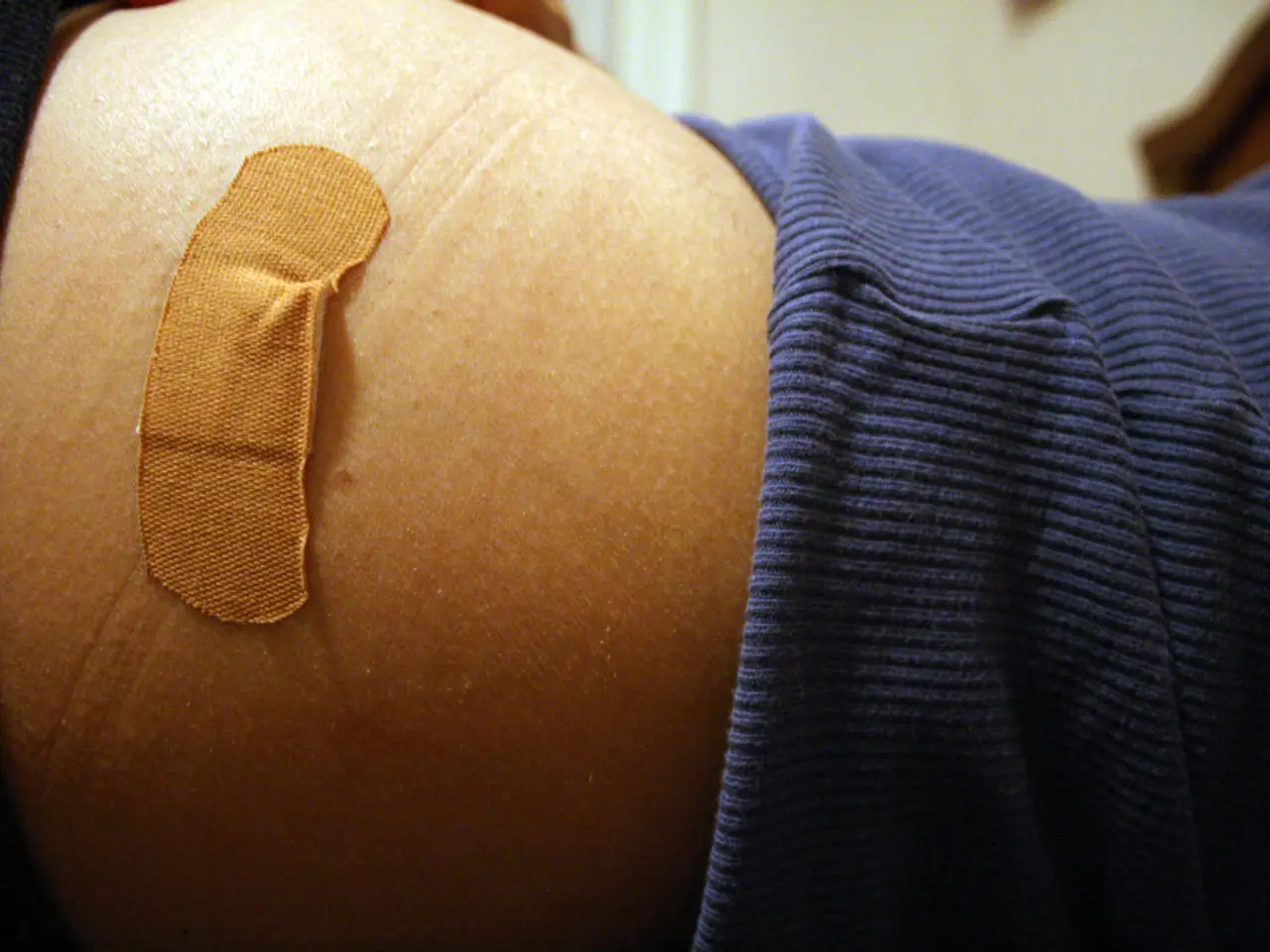Heart surgery recovery focus on sternum healing: Important facts to understand
Healing After Open Heart Surgery: A Comprehensive Guide
Open heart surgery is a life-saving procedure, but it requires a significant recovery period. One of the crucial parts of the recovery process is the healing of the sternum, which can take up to 2-3 months.
Avoiding Certain Activities
For the first three months after surgery, or until your doctor deems it safe, it's essential to avoid activities that strain the chest or upper arm muscles, engage in sports or strenuous physical activity, and pull the body up using the arms. These activities can put unnecessary stress on the healing sternum.
Common Complications
A 2018 study identified several complications related to bone healing, bleeding, infection, and issues with the wire used to draw the sternum back together. These complications can delay healing and increase morbidity.
Factors Affecting Healing Time
The healing time of the sternum is influenced by multiple factors. Patient-related risk factors such as obesity, diabetes, heart failure, chronic obstructive pulmonary disease (COPD), and older age can impair healing and increase the risk of sternal complications. Surgical technique and complications, postoperative management and restrictions, infection control, pain management, and physical activity also play significant roles.
Postoperative Management
Following proper postoperative restrictions is crucial. For the first six weeks, it's advisable to avoid lifting anything that causes strain. Gradual return to light exercise, such as brisk walking, usually starts after 2-3 months with medical approval and supervised cardiac rehabilitation.
Infection Control
Sternal wound infections delay healing and increase morbidity. Symptoms such as redness, swelling, discharge, fever, or wound opening indicate possible infection needing urgent care.
Pain Management and Physical Activity
Effective pain control allows early mobilization and better respiratory function, reducing complications. Aim to walk when possible, starting with a short distance.
Returning to Work and Everyday Activities
Full recovery following a sternotomy in open heart surgery is possible, but it is a long process that can take months. A person can probably return to work after 1 to 3 months, but this will depend on the type of work they do and how physically demanding the job is. Doctors recommend easing your way back into everyday activities gently, starting with light housework after the first three months.
Monitoring the Healing Process
It's essential to check your wound every day for signs of a complication and contact your doctor immediately if any appear. Symptoms of a problem with the wound may include inflammation, heat or swelling, a change in the level of pain, pus or discharge, an unpleasant odor, the wound opening up, clicking or grinding in the breastbone, or the wire sticking through the skin.
Midterm Follow-up
The midterm follow-up for sternum healing after open heart surgery occurs between 13 and 21 months after surgery. At this stage, the researchers found that the sternums of 65.9% of the people had healed.
Risk Factors for Complications
Risk factors for improper sternum healing include obesity, osteoporosis, chest wall radiation therapy, taking steroids, paramedian closure, diabetes, and people with obesity or diabetes having a higher risk of developing a serious infection after open heart surgery.
Caring for the Wound at Home
Once the wound is clean and dry, it is safe to use the shower or take a short bath, but fragranced soaps, creams, or powders should be avoided. At home, avoid rubbing the wound too vigorously when drying after washing and don't scratch or pick at the wound, as this can lead to infection.
Mediastinitis and Sternal Abscess
Mediastinitis, an infection that causes swelling and irritation between the lungs, can cause fever, pain, rash, an unstable sternum, wound opening, and the presence of Staphylococcus aureusbacteria. Smoking, obesity, prolonged surgery, improper surgical technique, problems with wound care, and hypothermia due to the anesthetic used during surgery are risk factors for an abscess in the sternum.
Wire-related Complications
Complications with the wire used to draw the sternum back together can cause pain, a clicking noise when moving, and the wire to stick through the person's skin.
In summary, the healing time depends on individual risk factors, surgical approach, prevention of infection, and careful adherence to postoperative guidelines. Monitoring and addressing complications promptly are essential to ensure optimal sternum healing after open heart surgery.
- A study from 2018 highlighted several complications associated with open heart surgery, including those related to bone healing, bleeding, infection, and issues with the wire used to reconnect the sternum.
- Some chronic medical conditions, like obesity, diabetes, heart failure, COPD, and being older, can impact the healing time of the sternum following open heart surgery and increase the risk of associated complications.
- After an open heart surgery, it's essential to avoid activities that strain the chest, upper arm muscles, participate in sports, strenuous physical activity, or lift heavy objects during the recovery period.
- Mental health conditions, such as depression, can also impact the recovery process, making it crucial for the medical-health and wellness professionals to address this aspect during postoperative care.
- The cardiac health and proper cardiovascular health are significant factors in ensuring a smooth recovery after an open heart surgery, and healthcare providers should evaluate and manage these health-conditions accordingly.
- During the first three months after the surgery, people should report any sign of infection, abnormal pain, or uncontrolled bleeding to their doctors for a timely intervention, as these can delay the healing process and increase the risk of complications.
- Post-operative management includes strict adherence to medical instructions, such as the importance of pain control, gradual return to exercise, and proper wound care, to accelerate recovery and reduce the risk of setbacks.
- An effective chronic disease management approach should also involve regular follow-up visits with healthcare providers to monitor the healing process, assess the healing rate, and identify any developing complications early on.




